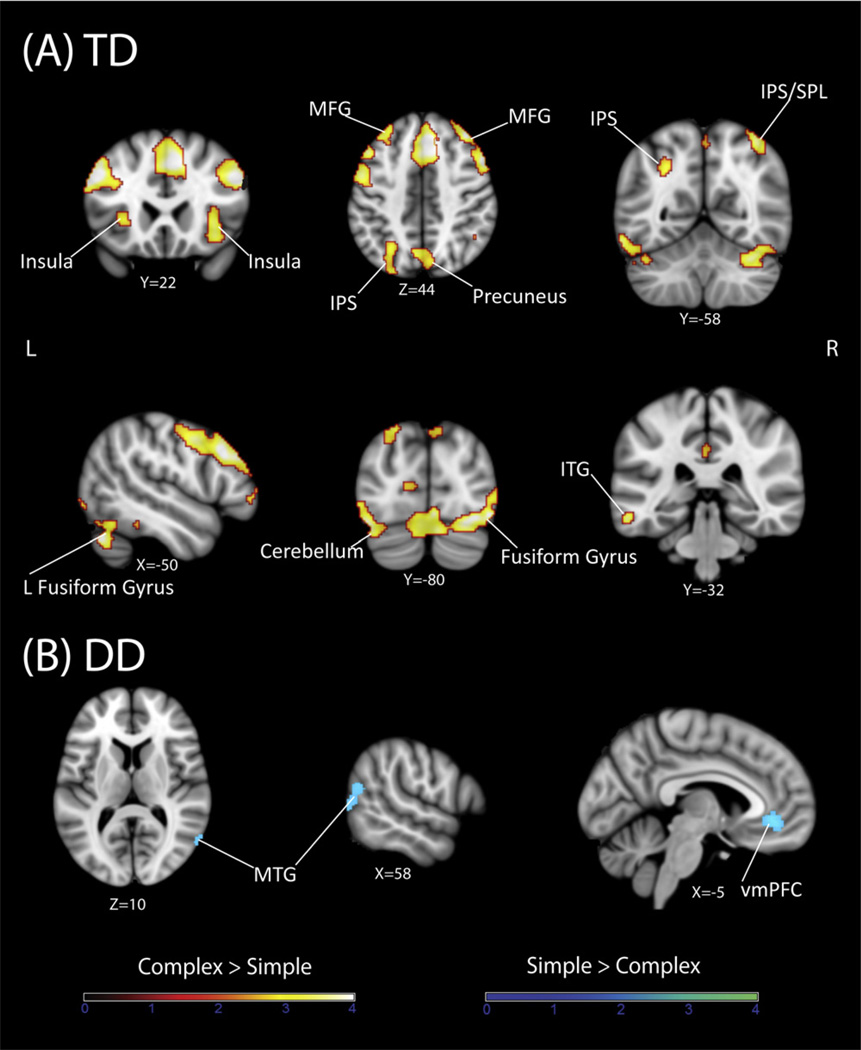Fig. 2.
Arithmetic complexity effects in the TD and DD groups. Brain response related to arithmetic complexity obtained by contrasting Complex and Simple addition problems. Coronal slices show significant activation (Complex > Simple, red scale) and significant deactivation (Simple > Complex, blue scale) in each group. (A) TD children showed greater complexity-related activation in multiple dorsal and ventral stream areas as well as the prefrontal cortex, including left intraparietal sulcus (IPS), right IPS and superior parietal lobule (SPL), bilateral precuneus, bilateral dorsolateral prefrontal cortex (middle frontal gyrus), bilateral insula, left inferior and middle temporal gyrus (MTG) and bilateral fusiform gyrus. (B) In contrast, no brain areas showed greater complexity-related activation in children with DD. Instead, they showed greater activation to Simple problems in left MTG and in the ventromedial prefrontal cortex (vmPFC).

